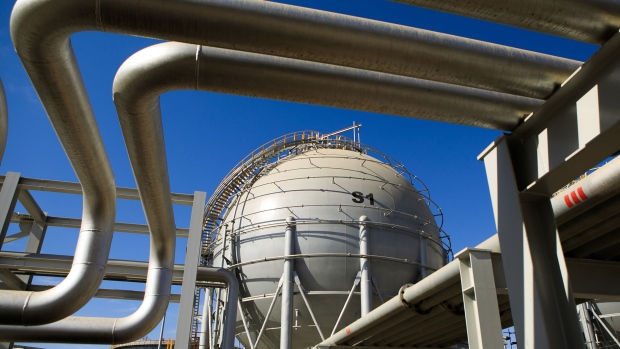Mar 29, 2019
Natural gas prices are crashing everywhere as market suffers 'winter hangover'
, Bloomberg News

Natural gas prices are collapsing across the globe as supplies from the U.S. to Australia flood the market, sparking concern some exporters will have to curtail output and raising questions about new investments.
While prices typically ease at this time of year as mild weather in the northern hemisphere crimps demand, a boom in output of the heating and power-plant fuel is exacerbating the slump. The crash comes as the world’s biggest energy companies are set to gather at the LNG2019 conference in Shanghai next week, with many considering whether to move forward with a wave of massive, multibillion-dollar liquefied natural gas export projects.
Global trade is already shifting as lower prices wipe out the economics of sending U.S. gas to Asia and boost Europe’s appeal as a market. New LNG production from Australia, Russia and the U.S. has helped to push prices in Asia more than 50 per cent lower this year after a warmer-than-normal winter. Even as concern about climate change drives a shift to cleaner-burning gas from coal, demand isn’t growing fast enough to absorb the supply surge.
“The gas market obviously is undergoing a winter hangover” after warm weather curbed demand, said Francisco Blanch, head of global commodities and derivatives research at Bank of America Corp. in New York. “We are getting a glut across the board and we don’t see that changing all that much.”
Asia’s LNG benchmark, the Japan-Korea Marker, has more than halved since the start of the year to US$4.375 per million British thermal units as of March 26. It’s fallen to a rare discount to European prices, as U.K. National Balancing Point futures traded at around US$4.50 on Friday, down 44 per cent this year in their worst quarter in a decade. U.S. gas futures are down more than 8 per cent this year, heading for the worst quarterly loss in two years.
The gas crash stands in stark contrast to oil prices, which are heading for their best quarter since 2002 as OPEC and its partners curtail production amid a decline in output from Iran and Venezuela. Since gas is produced as a byproduct of crude drilling in places like West Texas’s Permian Basin, the oil rally threatens to exacerbate the gas glut.
Supply Frictions
European gas prices are also dropping relative to the U.S., and if the spread narrows further, American exporters may be forced to cut output, according to Societe Generale SA. The market is collapsing just as more Gulf Coast terminals designed to send LNG overseas are poised to start up, creating the first real test of buyers’ appetite for U.S. cargoes.
“Prices could keep falling and stay low for weeks, perhaps until sometime closer to the middle of the year, after the market has adjusted and overcome frictions on the supply, demand and shipping sides,” Citigroup Inc. analysts including Anthony Yuen wrote in a March 28 note to clients.
European prices may need to fall more than 15 per cent to make U.S. LNG into the region uneconomic and help rebalance an oversupplied system this summer, BloombergNEF analysts said in a report this week.
Winter Demand
So much production is flooding the market that prices may not begin a sustained rebound until heating demand starts to pick up during the northern hemisphere winter, said Meg Gentle, chief executive officer of Tellurian Inc., which is planning a US$28 billion export terminal in Louisiana.
The short-term pain may seem at odds with expectations that several developers are now set to announce billions of dollars in investments for new export facilities. That’s because the medium-term outlook calls for the current surplus to shift into a deficit early next decade, which can only be avoided if projects are sanctioned now.
The impacts of this situation on U.S. projects “might raise questions at LNG2019 for the U.S. developers trying to sell LNG export capacity,” Citigroup analysts wrote in the note. “Ultimately, customers are likely to look past this near-term dynamic.”
Global consumption is forecast to grow 1.6 per cent over the next five years, with China accounting for a third of global demand growth to 2022, according to the International Energy Agency. Gas is expected to surpass coal as the world’s second-largest energy source, after oil, by 2030 amid a push to cut emissions.
“I have full confidence that the market will expand” to accommodate rising LNG production, Tellurian’s Gentle said. “We will see it not only for power generation but going into the residential and transport sectors.”



